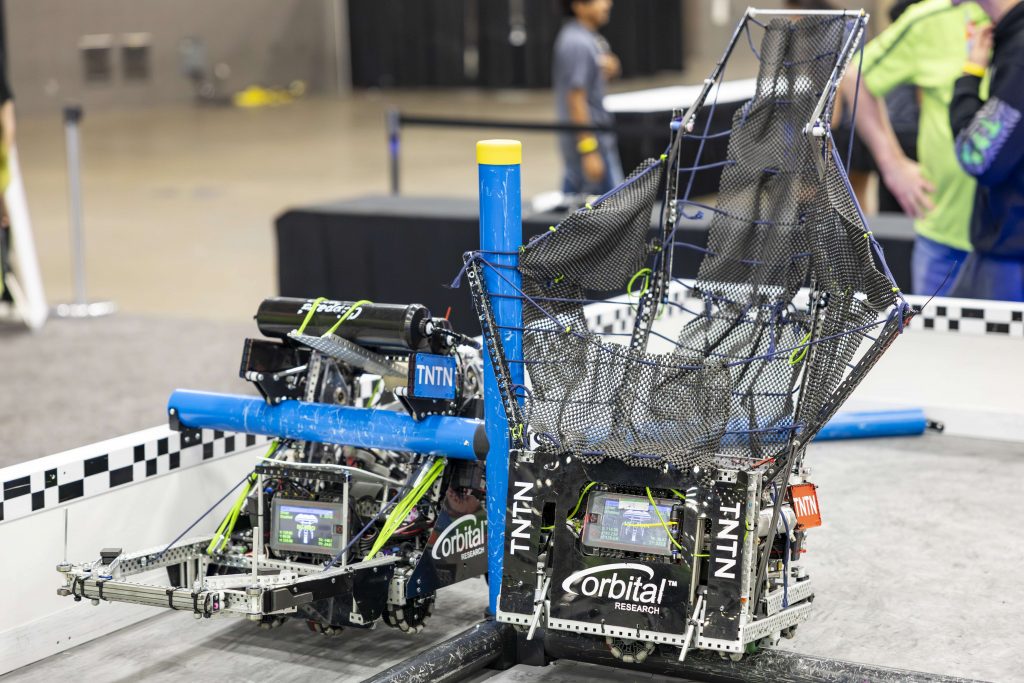Congratulations to Mechanical Engineering student Scott Favaro and Industrial Mechanic (Millwright) Foundation student Logan Dennis for placing first place with their TNTN team in the Skills World Champion and Worlds Think categories at the VEX Robotics World Championship in Dallas, Texas. The team achieved a skills score of 450, with second place scoring 353. The also won the think award in their division, which is a judging award presented mainly for code. Additionally, the team had the opportunity to represent Canada in the parade of nations.
VEX Robotics World Championship (VEX U) is the largest robotics competition in the world that sees high school and post-secondary student competitors from all over the world. The game objective is for students to build robots and manipulate them in scoring points within the particular game design. The game is more like a sport than a science fair, and changes every year.
“Winning Vex U World’s was amazing. It felt unreal as we are the only BC Vex U team right now, and for us to do this well in our starting year was absolutely extraordinary. Every single member of TNTN had their specific role, and everyone pridefully knows they held a piece in our success,” explains Scott Favaro, BCIT Mechanical Engineering student.
Game objective for VEX Robotics World Championship
This year, the objective in the competition was to take green triangular balls, known as triballs, and toss them under the net on the other side of the field. In the last 15 seconds of the match, each team is required to hang their robot off the elevation bars in the field, with the higher robots scoring additional points for their team. There are two game types: skills and matches. In skills, competitors have one minute with just their robots to score as many points as possible. There are three driver runs and three fully autonomous runs, and the skills score is the combination of one’s highest score of each. This game type is the one that Scott, Logan, and their team won. There are also matches, which are two minutes long and competitors face off against another team. In Vex U, the first 45 seconds are autonomous, and the remaining 75 seconds is driver controlled.
“Both times I have competed at the World Championship have had similarities. It is chaotic the entire time, you are having to fix and innovate non-stop, and you don’t get enough sleep. Running a competition robot for so many matches back to back is not a sprint, it is a marathon. You have to be resilient, willing to change, and able to bounce back from failures,” shares Scott.
“For instance, the day we arrived the 24-inch robot was completely unresponsive to any code or driver input. Our coder had to troubleshoot for some hours before it was determined to be an unexpected glitch in how some of our pistons were defined. After that it was non-stop coding and recoding. Teams figured out how our autos worked, and were working to make counters to ours, which we had to then make counters to. By the end of the few days of competing we had made countless autos. We pride ourselves in build quality, and because of that we had almost no mechanical problems with our robots and their respective systems.”

